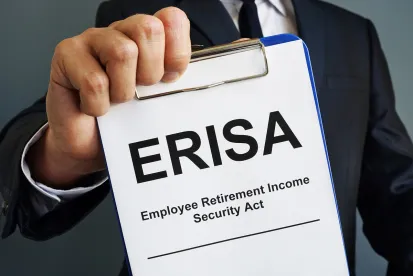The Second Circuit recently held that in order to state a claim for a prohibited transaction pursuant to ERISA section 406(a)(1)(C), it is not enough to allege that a fiduciary caused the plan to compensate a service provider for its services. Instead, “the complaint must plausibly allege that the services were unnecessary or involved unreasonable compensation.” Cunningham v. Cornell Univ., 2023 WL 7504142 (2d Cir. Nov. 14, 2023). Separately, the Second Circuit affirmed summary judgment for the defendants in connection with the plaintiffs’ fiduciary breach claims that were premised on allegations of excessive recordkeeping fees, underperforming investment funds, and the defendants’ failure to transition to lower-cost share classes of certain mutual funds.
Background
Participants in two Cornell University retirement plans sued the University, its retirement plan committee, and others, alleging that they breached their fiduciary duties of loyalty and prudence under ERISA section 404(a)(1)(A) and (B). The claims were premised on allegations that the defendants failed to properly monitor the plans’ recordkeeping fees and investment options, and as a result, the plans paid excessive recordkeeping fees, maintained underperforming investment funds, and failed to transition to lower-cost share classes of certain mutual funds.
The complaint also alleged that, by contracting with the plans’ recordkeepers, the defendants caused the plans to enter into prohibited transactions in violation of ERISA section 406(a)(1)(C), which provides that “[e]xcept as provided in [ERISA section 408]: (1) a fiduciary with respect to a plan shall not cause the plan to engage in a transaction, if he knows or should know that such transaction constitutes a direct or indirect . . . (C) furnishing of goods, services, or facilities between the plan and a party in interest.” Section 408 of ERISA contains a series of exemptions from this and other prohibited transactions, including the exemption under ERISA section 408(b)(2) for agreements with a party in interest to provide “services necessary for the establishment or operation of the plan, if no more than reasonable compensation is paid therefor.”
ERISA Section 406(a)(1)(C) Claim
With respect to the prohibited transaction claim, the Second Circuit recognized the existing circuit split regarding the appropriate pleading standard for claims under section 406(a)(1)(C). On one hand, the Third, Seventh, and Tenth Circuits adopted narrow readings of this section, albeit via different means:
- The Third Circuit required plaintiffs to allege “an element of intent to benefit a party in interest.”
- The Seventh Circuit held that the alleged transaction must “look[] like self-dealing,” as opposed to “routine payments for plan services.”
- The Tenth Circuit held that “some prior relationship must exist between the fiduciary and the service provider to make the provider a party in interest under [section 406].”
On the other hand, the Eighth and Ninth Circuits embraced a broad reading of section 406(a)(1)(C) that these other circuits have rejected as “absurd”:
- The Eighth Circuit held that plaintiffs stated a plausible claim by alleging that the plan sponsor caused the plan to enter into an agreement with a party in interest in which it received “undisclosed amounts of revenue sharing payments in exchange for services rendered to the [p]lan,” and that plaintiffs need not allege such compensation was unreasonable because the section 408(b)(2) exemption is an affirmative defense not properly considered at the pleading stage.
- The Ninth Circuit embraced a “literal reading” of the statute without addressing whether the exemptions in section 408 are treated as affirmative defenses at the pleading stage.
The Second Circuit first observed that, were it not for the exemption under section 408(b)(2), section 406(a)(1)(C) would prohibit payments by a plan to any entity providing it with any services. Then, having reviewed the other circuits’ decisions, the Court agreed with the district court that ERISA section 406(a)(1) cannot be read to demand explicit allegations of “self-dealing or disloyal conduct,” but disagreed with the Eighth Circuit’s view that a plausible claim is stated without regard to plaintiff’s ability to disprove that an exemption applies. Consistent with the decisions from the Third, Seventh, and Tenth Circuits, the Second Circuit held that “at least some of those exemptions—particularly the exemption for reasonable and necessary transactions” under section 408(b)(2)—are incorporated into section 406(a) because that section prohibits the enumerated transactions “[e]xcept as provided in [ERISA section 408].” As a result, the Second Circuit held that to state a prohibited transaction claim under section 406(a)(1)(C), a plaintiff “must plausibly allege that a fiduciary has caused the plan to engage in a transaction that constitutes the ‘furnishing of . . . services . . . between the plan and a party in interest’ where that transaction was unnecessary or involved unreasonable compensation.” (Emphasis in original.)
Turning to the University defendants’ prohibited transaction claim—which the district court dismissed at the pleading stage—the Second Circuit found that the plaintiffs’ three allegations were plainly insufficient. First, while the complaint alleged that the recordkeepers were service providers and thus parties in interest, and their furnishing of services to the plans was a prohibited transaction unless the defendants prove an exemption applies, the complaint did not allege, as it must, that the transactions were unnecessary or the compensation was unreasonable. Second, insofar as the complaint alleged procedural deficiencies with regard to the recordkeeping services—e.g., that the defendants failed to obtain bids from other service providers and neglected to monitor the amount of revenue sharing the recordkeepers received—the Second Circuit ruled that such process-oriented allegations may suffice to state a claim for fiduciary breach, but cannot sustain a prohibited transaction claim. Third, the Second Circuit found the allegation that the plans paid more than a “reasonable recordkeeping fee” insufficient, in the absence of any allegations about the services rendered.
Fiduciary Breach Claims
Unlike the plaintiffs’ prohibited transaction claim, the plaintiffs’ fiduciary breach claims arrived at the Second Circuit on appeal following the district court’s grant of summary judgment in favor of the University defendants. The Second Circuit agreed that the plaintiffs failed to meet their burden to proceed to trial on their claims for breach of fiduciary duty. As to the claim of excessive recordkeeping fees, the Court explained that the plaintiffs failed to prove that the plans suffered any losses as a result of the alleged breaches, where they established only that the plans paid recordkeeping fees. Instead, they must establish, at a minimum, that there was a “prudent alternative” to the allegedly imprudent fees, i.e., they must provide evidence of a “suitable benchmark” against which loss could be measured. Next, the Court concluded that the plaintiffs failed to put forth any evidence that would allow a reasonable trier of fact to determine that the defendants’ process for monitoring investment funds was flawed. Finally, as to the share class claim, the Court observed that the defendants presented evidence that they had in fact tried to transition to less expensive share classes, but those efforts were rebuffed.
Proskauer’s Perspective
The Second Circuit’s decision is consistent with the structure of ERISA’s prohibited transaction regime under section 406(a), which prohibits virtually every transaction with a party in interest—from purchases, sales, and extensions of credit, to routine arrangements with a service provider—unless an exemption applies. As noted, the decision is also consistent with the decisions from the Third, Seventh, and Tenth Circuits, but sits in contrast to the Ninth Circuit opinion on which we previously blogged. With the two circuit courts taking opposite views just a few months apart on the pleading requirements for prohibited transaction claims, we would not be surprised if one or both cases lands at the Supreme Court. In the meantime, the outcome of a motion to dismiss prohibited transaction claims very well may depend upon where the lawsuit is commenced.



 />i
/>i

